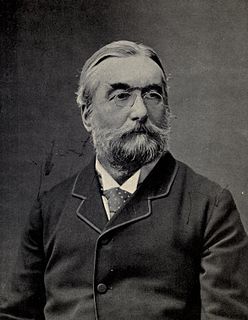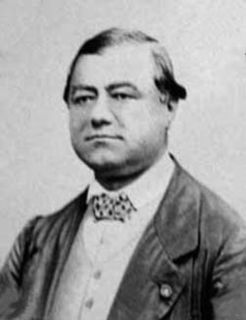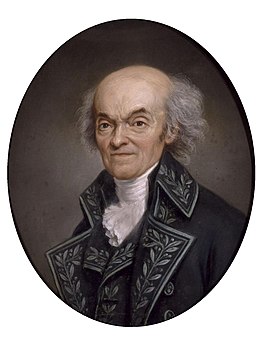Related Research Articles

Sir John Frederick William Herschel, 1st Baronet was an English polymath, mathematician, astronomer, chemist, inventor, experimental photographer who invented the blueprint, and did botanical work.

The Prix de Rome or Grand Prix de Rome was a French scholarship for arts students, initially for painters and sculptors, that was established in 1663 during the reign of Louis XIV of France. Winners were awarded a bursary that allowed them to stay in Rome for three to five years at the expense of the state. The prize was extended to architecture in 1720, music in 1803, and engraving in 1804. The prestigious award was abolished in 1968 by André Malraux, the Minister of Culture.

Sir Joseph Norman Lockyer was an English scientist and astronomer. Along with the French scientist Pierre Janssen, he is credited with discovering the gas helium. Lockyer also is remembered for being the founder and first editor of the influential journal Nature.

Charles-Eugène Delaunay was a French astronomer and mathematician. His lunar motion studies were important in advancing both the theory of planetary motion and mathematics.

The Royal Society of Edinburgh is Scotland's national academy of science and letters. It is a registered charity, operating on a wholly independent and non-party-political basis and providing public benefit throughout Scotland. It was established in 1783. As of 2017, it has more than 1,660 Fellows.

Alfred Fowler, CBE FRS was an English astronomer.

Sir Charles Wyville Thomson was a Scottish natural historian and marine zoologist. He served as the chief scientist on the Challenger expedition; his work there revolutionised oceanography and led to his knighthood.

Thomas Thomson was a Scottish chemist and mineralogist whose writings contributed to the early spread of Dalton's atomic theory. His scientific accomplishments include the invention of the saccharometer and he gave silicon its current name. He served as president of the Philosophical Society of Glasgow.

Alphonse Louis Pierre Pyrame de Candolle was a French-Swiss botanist, the son of the Swiss botanist Augustin Pyramus de Candolle.

Sir William Abbott Herdman FRS FRSE FLS was a Scottish marine zoologist and oceanographer.

George Carey Foster FRS was a chemist and physicist, born at Sabden in Lancashire. He was Professor of Physics at University College London, and served as the first Principal from 1900 to 1904.
The Botanical Society of Scotland (BSS) is the national learned society for botanists of Scotland. The Society's aims are to advance knowledge and appreciation of flowering and cryptogamic plants, algae and fungi. The Society's activities include lectures, symposia, field excursions, field projects and an annual exhibition meeting, held jointly with the Botanical Society of Britain and Ireland for exchange of information between botanists working in different areas. Its publications include a twice-yearly newsletter, BSS News, and a scientific journal, Plant Ecology & Diversity. The society is closely linked to the Royal Botanic Garden Edinburgh and the Scottish universities.

The Lalande Prize was an award for scientific advances in astronomy, given from 1802 until 1970 by the French Academy of Sciences.
Richard Émile Augustin de Candolle was a Swiss botanist and was British consul to the Canton of Geneva between 1912 and 1918.
Lt Colonel Frank Wyville Thomson FRSE IMS was a 19th/20th century Scottish military surgeon and expert on tropical medicine who advanced public health in India and a noted amateur naturalist.
References
- ↑ "Fellows of the Royal Society". London: Royal Society. Archived from the original on 16 March 2015.
- ↑ "Obituary Notices of Fellows Deceased: Editing Carey Foster". Proceedings of the Royal Society of London. 96 (680): i–xviii. 1920. Bibcode:1920RSPSA..96D...1.. doi:10.1098/rspa.1920.0007. JSTOR 93812.
- ↑ Cortie, A. L. (1921). "Sir Norman Lockyer, 1836 – 1920". Astrophysical Journal. 53: 233–248. Bibcode:1921ApJ....53..233C. doi:10.1086/142602.
- ↑ . Dictionary of National Biography . London: Smith, Elder & Co. 1885–1900.
- ↑ "Henry Thuillier". The Oxford Dictionary of National Biography. 2004. doi:10.1093/ref:odnb/36519.
- ↑ Fancher, R. E. (October 1983). "Alphonse de Candolle, Francis Galton, and the early history of the nature-nurture controversy". Journal of the History of the Behavioral Sciences. 19 (4): 341–52. doi:10.1002/1520-6696(198310)19:4<341::aid-jhbs2300190403>3.0.co;2-7. PMID 11608560.
- ↑ O'Connor, John J.; Robertson, Edmund F., "Charles-Eugène Delaunay", MacTutor History of Mathematics archive , University of St Andrews .